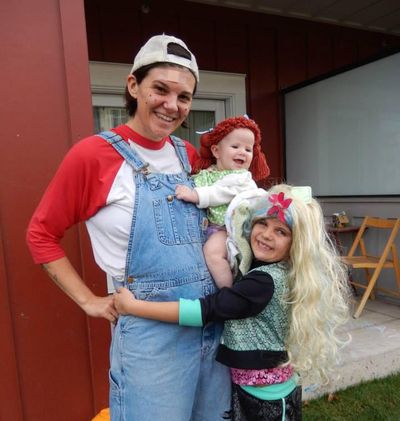I told my daughter she can’t dress up as a Native American for Halloween. Here’s why.

My 8-year-old daughter is obsessed with American Girl dolls. She knows every doll’s name, pet’s name and horse’s name. And she’s particularly obsessed with a doll named Kaya, which is short for Kaya’aton’my, “she who arranges rocks.” A fictional character that came out in stores in 2002, Kaya is from the Nimi’puu, or Nez Perce tribe, and the first Native American doll of the American Girl line since the company began in 1986.
But then my daughter wanted to be Kaya for Halloween.
I felt a little relief at first. In the last couple of years, she’d graduated to the tier of Halloween costumes that are getting beyond the adorable cats and vegetables, and into the sexualized realm of short skirts and sheer stockings added to just about any genre, ranging from Strawberry Shortcake to career-centralized costumes. But I’d never had to stop and think about her costume falling under cultural appropriation.
We live in Western Montana, a state that is home to 12 Indian Nations, many people still located on seven reservations. My daughter wanted to dress like a character she was enamored with, but how could I tell her how inappropriate that was and why? There are no kid-friendly terms for genocide.
I understand that it’s natural for kids to want to act out different roles in playing, and that I might be stretching on a “teaching moment” here, but a quick search on Amazon brings up several costumes for kids that are caricatures of marginalized populations.
Girls can choose from being a Native American Princess, Spanish Princess or an Asian Princess. Of course, for boys, there’s no shortage of available Ninja Warriors and Indian Warriors listed along with the cowboy costumes.
As an ’80s kid, I kept thinking of an episode of “Gimme a Break” where Nell Carter explains to the middle daughter why it was wrong to dress a young Joey Lawrence up in blackface for a church performance. Why wouldn’t that go for dressing like any marginalized culture?
Even without the cultural misappropriation in the costumes, there is sexism present as well.
In an open letter, an exasperated Lin Kramer discovered the “career” costumes for girls were precursors to the sexy counterparts marketed to teens and women. “Generally speaking,” wrote Kramer on Party City’s Facebook page, “real life uniformed female police officers do not wear short skirts and low cut shirts, but instead wear exactly the same slacks and shirts as their male counterparts.”
As parents, we know how it feels to see little girls’ costumes portrayed as what will become “sexy” in as little amount of years old as 10 or 11. But what does it feel like for other cultures to see kids dressed as other cultures?
“It is okay to admire our culture. However I then think it is reasonable to ask that if you admire a culture, you should learn more about it” writes Chelsea Vowel, a Metis writer and educator, in an article in which she compared toting a headdress to waving around a fake medical degree.
“It’s very mocking,” a member of the Baa’oogeedm of the Navajo Nation told me in a conversation about the Halloween costume. “We don’t consider those outfits costumes. They’re symbolic and blessed. They have a spirit to them. They’re viewed with the same beauty and symbolism they represent.”
I tried talking to my daughter about her costume choice, but the point didn’t get across until later that week, when the Northern Native American drumming group the Black Lodge Singers performed during an assembly at her school. Three children her age dressed in their powwow regalia, accompanied by two teenage performers. Kenny Sabby Robe spoke to the audience before the older girl performed in her jingle dress, describing the process and care in making it.
I asked my daughter after school if she still wanted to dress up like Kaya for Halloween, and she said no, and added, “Those are special outfits. They’re not for Halloween.”
She’s decided to dress like Juliet from the Shakespeare play now. As she stood there, wearing the long gown and putting her hair in braids in front of the mirror, she asked, “So, what happens to Juliet, anyway?” Um …
Stephanie Land of Missoula writes through Barbara Ehrenreich’s Economic Hardship Reporting Project, and for social and economic justice as a writing fellow through the Center for Community Change. She’s on Twitter @stepville.